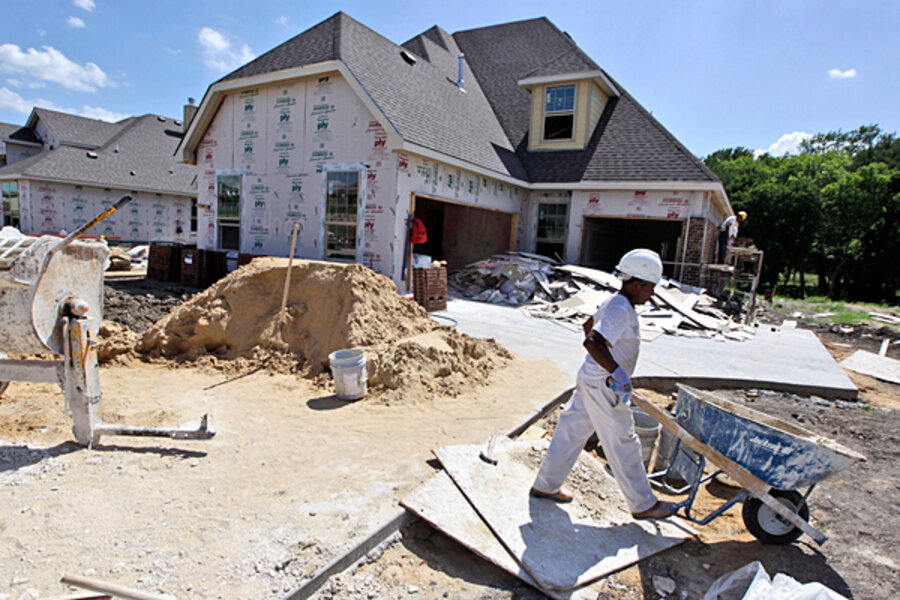Housing market rebound? New-home starts notch a post-2008 high.
Loading...
The pace of homebuilding activity is on the mend in another sign of healing in the US housing market.
Builder "starts" on new homes reached an annualized rate of 760,000 in June, the Commerce Department reported Wednesday. That's the highest level on that indicator since October 2008, when the nation's economy was being gripped by a severe financial crisis.
The gains in homebuilding don't mean the housing market has put all of its troubles behind it. Sales of so-called distressed properties remain high, and more than 1 in 5 mortgage borrowers owe more than their home is worth.
But real estate analysts say the progress is real.
Consider this: For four straight quarters, the residential construction industry has actually been adding to the nation's gross domestic product (GDP), as usually occurs during an economic recovery. The pace hasn't been as strong as normal, but it has accelerated. And such a four-quarter string of expansion in homebuilding hasn't been seen since 2005, according to Commerce Department data.
The annualized June housing starts, at 760,000, were up from 535,000 annualized in June 2011.
"The difference between these two numbers clearly shows that the housing market is back on track," economists Patrick Newport and Michelle Valverde of IHS Global Insight said in an analysis of the new numbers. But the still-low level "also shows that we have far to go."
They said that the number of new permits to build, also given in the Commerce Department report, weren't as positive. Permits dipped in June after a large gain in May.
The longer-term trend in building permits is positive, however, despite some month-to-month volatility. And the June decline was entirely in multi-family properties, while single-family permits rose modestly.
More broadly, home prices across the country show a stabilizing trend after the long weakness that followed the housing bust. The market shows greater balance between the number of sellers and buyers, with about a six-month inventory of previously owned homes now for sale.
Although that level of inventory is fairly normal, it reflects a situation where many would-be sellers and buyers are on the sidelines. Many homeowners feel they can't sell, because the sales price wouldn't cover their mortgage balance. And many potential buyers are having trouble getting access to credit.
"If conditions were normal, the economy would need to put up at least 1.5 million [new-home] units a year to meet demand coming from housing’s three main drivers – household formation, demand for second homes and replacement demand," the economists at IHS Global Insight said. "We are not expecting 1.5 million gains until 2015."





